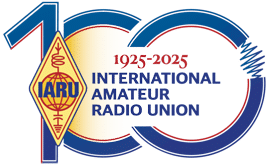This is a free fortnightly newsletter about the New Zealand Net.
If you would like to be notified by email when a new edition is published, please contact ZL1NZ.
Browse our Newsletter Archive and List of Net Tips.
Featured key
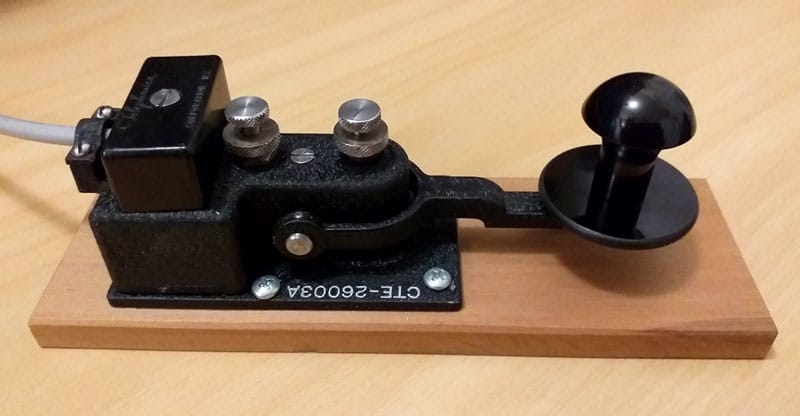
US Navy Flameproof key. Photo: ZL1NZ
During World War 2, the US Navy copied the design of a German Luftwaffe key, and had it produced by various contractors. Many, such as this one, were made by Telephonics (hence “TE” in the part number).
The key’s contacts and terminals are fully enclosed to reduce the risk of an explosion when used near dangerous gases. Hence, it is one of several types of key known as “flameproof.”
The key pictured above is my favourite straight key and it is always connected to the rig in case I need to QRS. Flameproof keys are quite complex devices and I have taken the advice of experts and refrained from opening mine! I have found that it will not key properly if you adjust it to a very close gap, which I usually prefer. But it is such a nice key I have become used to operating with a little more arm movement.
Some people mount straight keys on heavy metallic bases. I have never understood this, since the only force applied to the key is downward on the knob. A light piece of timber that extends as far back as the knob is enough to prevent the key from tipping, even with vigorous brass-pounding. (Heavy bases on bugs, however, are definitely a good idea!)
* If you have an interesting key for this feature, please send me a nice clear photo and a few words describing it.
Quick notes
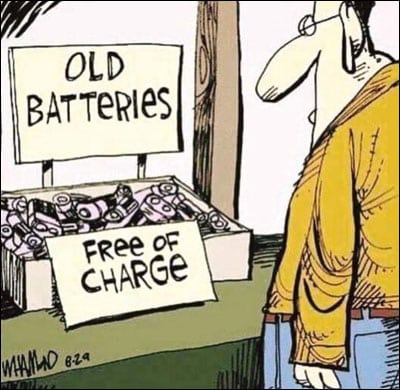 You have until midnight Saturday to collect points for the Marlborough 90th Anniversary Award, by working stations in Marlborough including ZL2KS, the club station for NZART Branch 22. Hopefully you’ve also got Gerard ZL2GVA in your log, on CW of course.
You have until midnight Saturday to collect points for the Marlborough 90th Anniversary Award, by working stations in Marlborough including ZL2KS, the club station for NZART Branch 22. Hopefully you’ve also got Gerard ZL2GVA in your log, on CW of course.
Thanks to everyone who’s been sending and receiving formal traffic during the net recently. We handled ten radiograms in one recent session, which I think is a record for our little net.
Summer propagation will make it hard for our VK friends to check into NZ Net on 80m. Fortunately, there is the weekly VKCW Net (14049 kHz at 0603Z every Wednesday) which is providing a good trans-Tasman circuit.
QNY to 40m: Manny VK3DRQ and I have worked each other a few times recently on 40m after the NZ Net, with very good signals. So, it is possible that if we have trans-Tasman traffic during the net, but poor conditions on 80m, then Net Control may ask the stations to QNY to 40m. I am thinking of 7025-7030 kHz, but I don’t spend much time on 40m these days so if anyone has a better suggestion, please advise. Also, if you do not have 40m capability, you might want to let me know so that our Net Controllers can be made aware.
Well-known radio amateur Gareth Bradshaw ZL3VP of Christchurch has become a Silent Key, aged 80. Gareth travelled through New Zealand in his motorhome, dubbed “Hamming Around.” He held various positions with NZART and AREC.
Vintage gear for sale: I have decided to start selling my vintage SSB gear. First up is a complete Collins S/Line station which I have listed on ZL HamAds.
Photo flashback
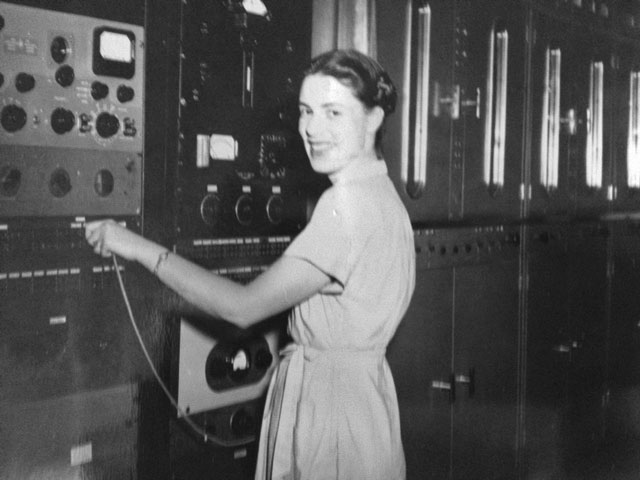
Ellen White KH6QI as engineer at broadcast station KPOA in Hawaii, c1947.
Ellen White – a fine CW operator, contester and DXer whose callsign W1YL appears many times in my log – became a Silent Key on 6 November, aged 95. You probably have Ellen in your log too. She always had a big signal on 40m, operating from her home in Florida while remote-controlling a powerful contest station in the western USA.
Ellen dedicated countless hours to supporting amateur radio, particularly the ARRL where she and her husband Bob W1CW were employed for several years. You can read an interesting interview with her from the National Contest Journal in 2015.
I once heard an acquaintance of mine call her “LN” during a QSO, which I thought was a pretty cool sine, although I don’t know if she approved, so I was never brave enough to use it during our chats!
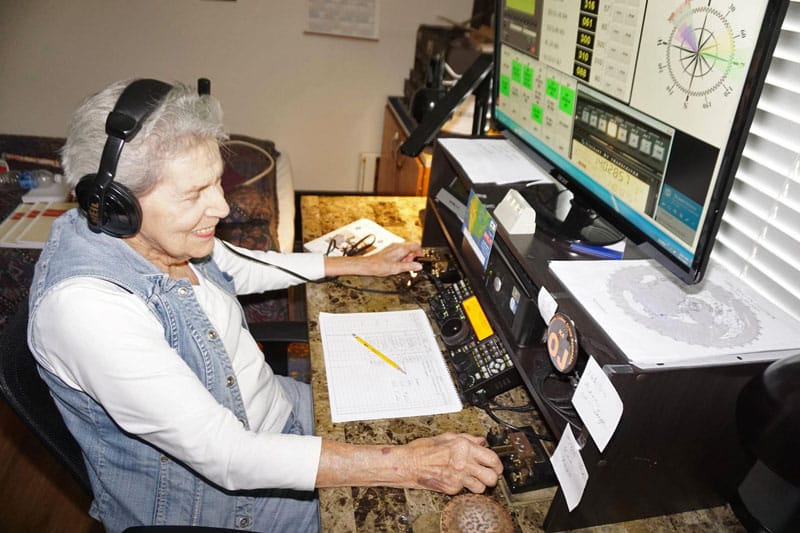
Here’s a more recent photo of W1YL. Yes, Ellen appears to be keying with both hands. There must be a story about that.
Net numbers
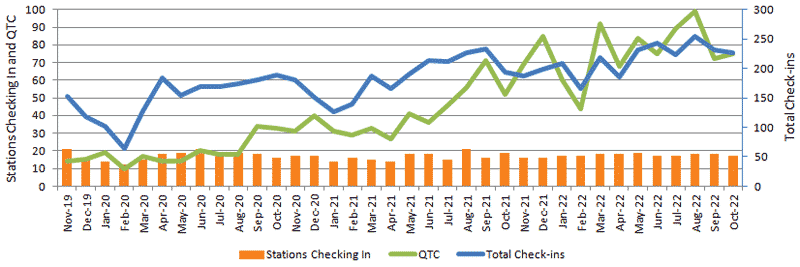
NR41 R ZL1NZ 43/40 0800Z 1NOV22 = NZ NET = OCT QNI VK3DRQ 20 VK4PN 13 ZL1AJY 6 ZL1ANY 16 ZL1BWG 20 ZL1NZ 21 ZL1PX 11 ZL1RA 13 ZL2GD 16 ZL2GVA 18 ZL2KE 9 ZL2LN 5 ZL2TE 11 ZL3TK 21 ZL4CU 6 ZL4FZ 3 ZL4KX 18 TOTAL 227 QTC 75 = ZL1NZ
Homebrewing a WW2 Paraset Radio
A few months back, Pete VK3BGM and I were chatting about some electronic keyers he had built (see NZ Net News 82) and he mentioned that he had also built a Paraset, the portable radio famously used by British agents in Europe during the Second World War.
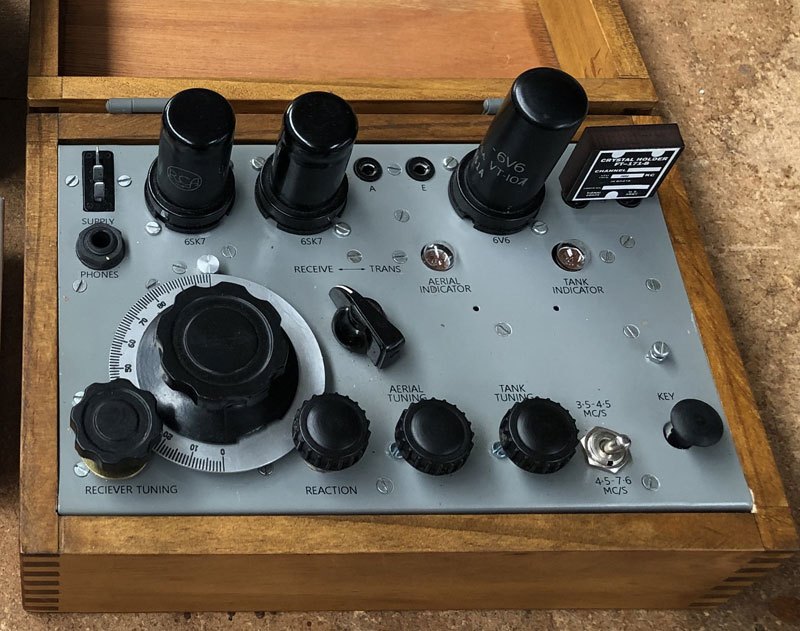
Paraset radio by VK3BGM
Pete sent me a photo of his Paraset and I had to learn more about it. It looked so good I started by asking if it was perhaps a kit. Here are Pete’s comments:
It’s all home brew. A lot of work, and one of the few projects I’ve finished.
I got the “finish” looking good, something that usually eludes me. Not so good on the inside. Point to point wiring not so easy.
It’s set up for 12V filaments and the receiver bandspread around 40m.
A friend made the box. Looking for a little suitcase.
Another friend did the labels using water slide transfers. He did an excellent job getting the font right. Pity about the spelling mistake.
I photo etched the dial. Worked so well that the first attempt was good enough.
Knobs were a long process of 3D printing, bogging up, sanding, making moulds, casting. Now I could print them with a 3D resin printer good enough to use.
Still got some minor details to do on the AC power supply.
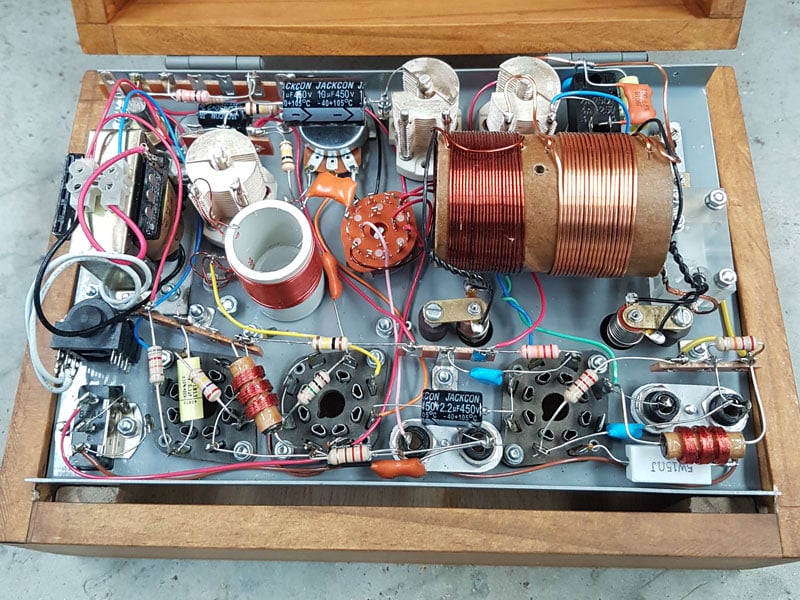
Paraset radio by VK3BGM
Morse challenge
It’s another visual challenge this time, and another example of how people shouldn’t really make products featuring Morse Code unless they get them checked by somebody who knows the code.
Your challenge is to spot the two incorrect characters on this Morse Code wrist watch. Send me your answer via radiogram or email.
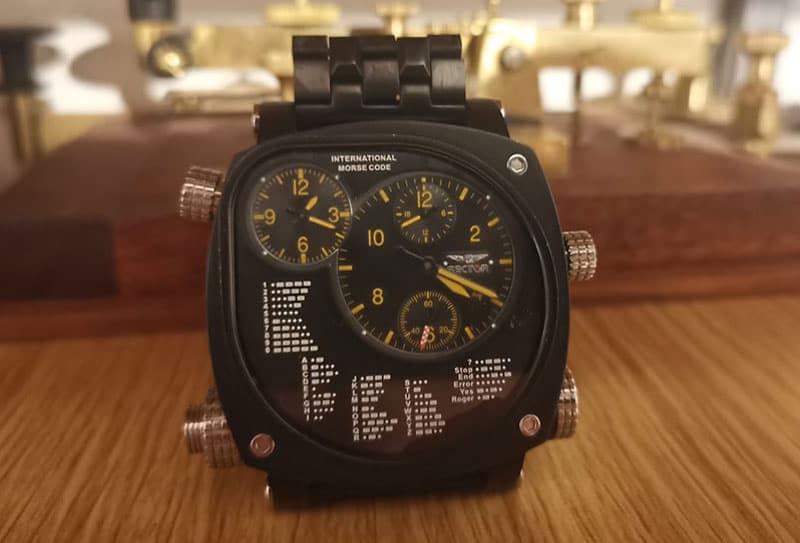
Answer to previous edition’s Morse Challenge
The station heard in the recording was the famous SAQ Alexanderson Alternator transmitter in Grimeton, Sweden, which transmits on 17.2 kHz.
Correct answers were received from VK3DRQ, ZL1ANY and ZL3TK. (Apologies if I missed anyone.)
Video: Why Morse is best
How the big guys avoid QRM
In a recent NZ Net Trivia message, Stephen ZL1ANY asked how WLW Cincinnati, an AM station which broadcast a huge 500 kW signal on 700 kHz during the 1930s, avoided clobbering CFRB which was on 690 kHz in Toronto (650 km away). The answer: by using a phased array of three towers to create a null towards Toronto.
Many AM broadcast stations in the USA and Canada had multi-tower antenna systems, primarily to protect other stations on the same frequency. I remember that in the 1970s Canada had about 1000 radio broadcast stations and the USA had about 10,000, so there would have been heaps of QRM if everyone ran omnidirectional, especially at night.
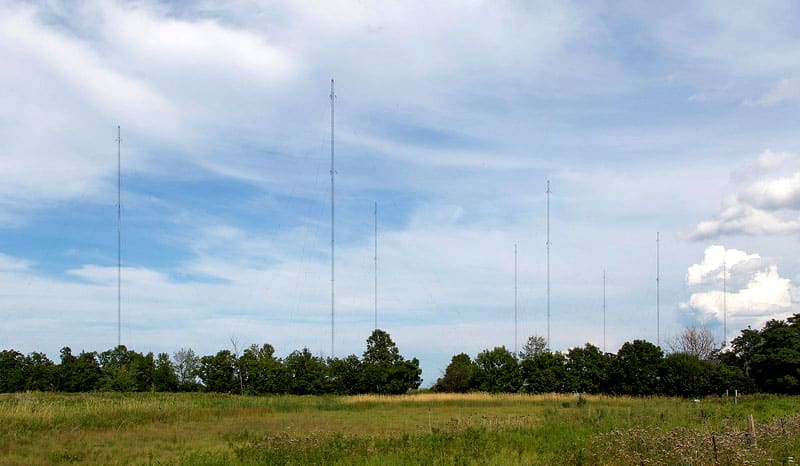
CFTR, a 50 kW AM station on 680 kHz in Toronto, had a complex pattern requiring eight towers.
A good example of the use of nulling was at CKX in Brandon, Manitoba on the Canadian prairies and not too far north of the US border. When I worked there in the mid 1970s we ran 50 kW daytime on 1150 kHz. But at sunset we changed our pattern (and probably reduced power too – I don’t remember) in order to provide a null that would protect CKOC in Hamilton, Ontario, which used the same frequency as CKX. The two stations were 1700 km apart!
You could hear stations doing pattern change. It happened quickly, but the station would go off the air for a fraction of a second.
Advertising archive
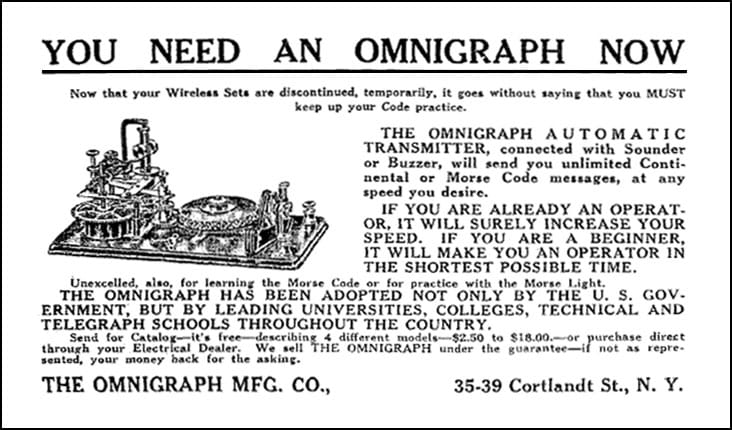
1917: An interesting wartime advertisement
Suggestions?
If you have suggestions on how to make the NZ Net better, or things you’d like to see covered in these updates, please contact ZL1NZ. You might even like to write something for the newsletter.
Thanks for reading, and I hope to hear you soon on the NZ Net!
—
Neil Sanderson ZL1NZ, Net Manager
New Zealand Net (NZ NET)
3535.0 kHz at 9pm NZT Mon-Fri



